Non-Linear Template-Based Approach for the Study of Locomotion
Abstract
1. Introduction
- A novel template-based step detection algorithm based on DTW, that assumes non-linear time deformations between templates
- The introduction of several strategies for inferring and learning a step pattern from gyrometer data
- A discussion on the role and the use of templates for the study of locomotion
2. Background
2.1. Gait Events
2.1.1. HS to FF
2.1.2. FF to MS
2.1.3. MS to HO
2.1.4. HO to TO
2.2. Dynamic Time Warping
2.2.1. Principle and Algorithm
2.2.2. Variants and Improvements
3. Data, Protocol and Subjects
3.1. Protocol
3.2. Subjects and Database
4. Method
- A new step detection algorithm based on template-matching and on a DTW refinement step
- Several strategies to construct the templates used in the algorithm
4.1. Dtw Step Detection
4.2. Construction of the Library of Templates
4.2.1. Strategy 1: Random Selection
4.2.2. Strategy 2: DTW-Based Selection
4.2.3. Strategy 3: Linear Fusion
4.2.4. Strategy 4: Non-Linear Fusion
4.2.5. Strategy 5: Knowledge-Based Piecewise-Affine Approximation
4.3. Evaluation Metrics
- Precision. A detected step is counted as correct if the mean of its start and end times lies inside an annotated step. An annotated step can only be detected one time. If several detected steps correspond to the same annotated step, all but one are considered as false. The precision is the number of correctly detected steps divided by the total number of detected steps.
- Recall (or sensitivity). An annotated step is counted as detected if the mean of its start and end times lies inside a detected step. A detected step can only be used to detect one annotated step. If several annotated steps are detected with the same detected step, all but one are considered undetected. The recall is the number of detected annotated steps divided by the total number of annotated steps.
- Start. For a correctly detected step, it is the difference between the detected start time and the annotated start time.
- End. For a correctly detected step, it is the difference between the detected end time and the annotated end time.
- Duration. For a correctly detected step, it is the difference between the duration of the detected step and the duration of the annotated step.
4.4. Experiments
- Experiment 1. For the S1-1 and S1-10 strategies, we studied the influence of the DTW refinement step described in Section 4.1 by comparing the metrics obtained with and without this additional step.
- Experiment 2. We compared the metrics obtained by strategies S2, S3, S4 and S5 by using the step detection algorithm with the DTW refinement step.
- Experiment 3. For strategy S5, we studied the influence of parameter z by computing the evaluation metrics Start, End and Duration for various values of z from 1 to 20 samples.
- Experiment 4. For strategy S5, we compared the evaluation metrics Start, End and Duration, obtained after a DTW refinement step, and a linear-correlation refinement step. To implement the linear-correlation refinement step, we re-implemented the process described in Section 4.1, replacing the search for a minimum DTW distance by the search for a maximum Pearson coefficient.
5. Results
5.1. Comparison with State-Of-The-Art
5.2. Experiment 1
5.3. Experiment 2
5.4. Experiment 3
5.5. Experiment 4
6. Discussion
6.1. Experiment 1
6.2. Experiment 2
6.3. Experiment 3
6.4. Experiment 4
6.5. Computation Time
6.6. Limitations
7. Conclusions
Author Contributions
Funding
Acknowledgments
Conflicts of Interest
References
- Trojaniello, D.; Cereatti, A.; Pelosin, E.; Avanzino, L.; Mirelman, A.; Hausdorff, J.M.; Della Croce, U. Estimation of step-by-step spatio-temporal parameters of normal and impaired gait using shank-mounted magneto-inertial sensors: Application to elderly, hemiparetic, parkinsonian and choreic gait. J. Neuroeng. Rehabil. 2014, 11, 152. [Google Scholar] [CrossRef] [PubMed]
- Greene, B.R.; Foran, T.G.; McGrath, D.; Doheny, E.P.; Burns, A.; Caulfield, B. A comparison of algorithms for body-worn sensor-based spatiotemporal gait parameters to the GAITRite electronic walkway. J. Appl. Biomech. 2012, 28, 349–355. [Google Scholar] [CrossRef] [PubMed]
- Lopez-Meyer, P.; Fulk, G.D.; Sazonov, E.S. Automatic detection of temporal gait parameters in poststroke individuals. IEEE Trans. Inf. Technol. Biomed. 2011, 15, 594–601. [Google Scholar] [CrossRef] [PubMed]
- Trojaniello, D.; Cereatti, A.; Della Croce, U. Accuracy, sensitivity and robustness of five different methods for the estimation of gait temporal parameters using a single inertial sensor mounted on the lower trunk. Gait Posture 2014, 40, 487–492. [Google Scholar] [CrossRef]
- Mariani, B. Assessment of Foot Signature Using Wearable Sensors for Clinical Gait Analysis and Real-Time Activity Recognition; Technical Report; EPFL: Lausanne, Switzerland, 2012. [Google Scholar]
- Marschollek, M.; Goevercin, M.; Wolf, K.H.; Song, B.; Gietzelt, M.; Haux, R.; Steinhagen-Thiessen, E. A performance comparison of accelerometry-based step detection algorithms on a large, non-laboratory sample of healthy and mobility-impaired persons. In Proceedings of the 2008 30th Annual International Conference of the IEEE Engineering in Medicine and Biology Society, Vancouver, BC, Canada, 20–25 August 2008; pp. 1319–1322. [Google Scholar]
- Lau, H.; Tong, K. The reliability of using accelerometer and gyroscope for gait event identification on persons with dropped foot. Gait Posture 2008, 27, 248–257. [Google Scholar] [CrossRef] [PubMed]
- Rampp, A.; Barth, J.; Schülein, S.; Gaßmann, K.G.; Klucken, J.; Eskofier, B.M. Inertial sensor-based stride parameter calculation from gait sequences in geriatric patients. IEEE Trans. Biomed. Eng. 2014, 62, 1089–1097. [Google Scholar] [CrossRef] [PubMed]
- Truong, C.; Barrois-Müller, R.; Moreau, T.; Provost, C.; Vienne-Jumeau, A.; Moreau, A.; Vidal, P.P.; Vayatis, N.; Buffat, S.; Yelnik, A.; et al. A Data Set for the Study of Human Locomotion with Inertial Measurements Units. Image Process. Line 2019, 9, 381–390. [Google Scholar] [CrossRef]
- Barrois, R.; Gregory, T.; Oudre, L.; Moreau, T.; Truong, C.; Aram Pulini, A.; Vienne, A.; Labourdette, C.; Vayatis, N.; Buffat, S.; et al. An Automated Recording Method in Clinical Consultation to Rate the Limp in Lower Limb Osteoarthritis. PLoS ONE 2016, 11, e0164975. [Google Scholar] [CrossRef]
- Shin, S.H.; Park, C.G. Adaptive step length estimation algorithm using optimal parameters and movement status awareness. Med. Eng. Phys. 2011, 33, 1064–1071. [Google Scholar] [CrossRef]
- Ying, H.; Silex, C.; Schnitzer, A.; Leonhardt, S.; Schiek, M. Automatic step detection in the accelerometer signal. In Proceedings of the 4th International Workshop on Wearable and Implantable Body Sensor Networks (BSN 2007), Aachen, Germany, 26–28 March 2007; pp. 80–85. [Google Scholar]
- Pan, J.; Tompkins, W.J. A real-time QRS detection algorithm. IEEE Trans. Biomed. Eng. 1985, 32, 230–236. [Google Scholar] [CrossRef]
- Libby, R. A simple method for reliable footstep detection on embedded sensor platforms. Sensors (Peterborough, NH) 2008, 116, 1–16. [Google Scholar]
- Thuer, G.; Verwimp, T. Step Detection Algorithms for Accelerometers. Master’s Thesis, Artesis University College of Antwerp, Antwerpen, Belgium, 2008. [Google Scholar]
- Oudre, L.; Barrois-Müller, R.; Moreau, T.; Truong, C.; Vienne-Jumeau, A.; Ricard, D.; Vayatis, N.; Vidal, P.P. Template-Based Step Detection with Inertial Measurement Units. Sensors 2018, 18, 4033. [Google Scholar] [CrossRef] [PubMed]
- Soaz, C.; Diepold, K. Step detection and parameterization for gait assessment using a single waist-worn accelerometer. IEEE Trans. Biomed. Eng. 2015, 63, 933–942. [Google Scholar] [CrossRef] [PubMed]
- Micó-Amigo, M.E.; Kingma, I.; Ainsworth, E.; Walgaard, S.; Niessen, M.; van Lummel, R.C.; van Dieën, J.H. A novel accelerometry-based algorithm for the detection of step durations over short episodes of gait in healthy elderly. J. Neuroeng. Rehabil. 2016, 13, 38. [Google Scholar]
- Vienne-Jumeau, A.; Oudre, L.; Moreau, A.; Quijoux, F.; Vidal, P.P.; Ricard, D. Comparing Gait Trials with Greedy Template Matching. Sensors 2019, 19, 3089. [Google Scholar] [CrossRef]
- Murray, M.P. Gait as a total pattern of movement. Am. J. Phys. Med. 1967, 46, 290–333. [Google Scholar]
- Oberg, T. Joint angle parameters in gait: Reference data for normal subjects, 10–79 years of age. J. Rehabil. Res. Dev. 1994, 31, 199–213. [Google Scholar]
- Stevenage, S.V.; Nixon, M.S.; Vince, K. Visual analysis of gait as a cue to identity. Appl. Cognit. Psychol. 1999, 13, 513–526. [Google Scholar] [CrossRef]
- Wang, J.; She, M.; Nahavandi, S.; Kouzani, A. A Review of Vision-Based Gait Recognition Methods for Human Identification. In Proceedings of the 2010 International Conference on Digital Image Computing: Techniques and Applications, Sydney, Australia, 1–3 December 2010; pp. 320–327. [Google Scholar] [CrossRef]
- Zhang, R.; Vogler, C.; Metaxas, D. Human gait recognition at sagittal plane. Image Vis. Comput. 2007, 25, 321–330. [Google Scholar] [CrossRef]
- Bhangale, A. Human Gait Model for Automatic Extraction and Description for Gait Recognition. Int. J. Bioinform. Biosci. 2012, 2, 15–28. [Google Scholar] [CrossRef]
- Gupta, P.; Singh, R.; Katiyar, R.; Rastogi, R. Biometrics System based on Human Gait Patterns. Int. J. Mach. Learn. Comput. 2011, 378–387. [Google Scholar] [CrossRef]
- Schöllhorn, W.; Nigg, B.; Stefanyshyn, D.; Liu, W. Identification of individual walking patterns using time discrete and time continuous data sets. Gait Posture 2002, 15, 180–186. [Google Scholar] [CrossRef]
- Horst, F.; Kramer, F.; Schäfer, B.; Eekhoff, A.; Hegen, P.; Nigg, B.; Schöllhorn, W. Daily changes of individual gait patterns identified by means of support vector machines. Gait Posture 2016, 49, 309–314. [Google Scholar] [CrossRef]
- Ferrari, A.; Bergamini, L.; Guerzoni, G.; Calderara, S.; Bicocchi, N.; Vitetta, G.; Borghi, C.; Neviani, R.; Ferrari, A. Gait-Based Diplegia Classification Using LSMT Networks. J. Healthc. Eng. 2019, 1–8. [Google Scholar] [CrossRef] [PubMed]
- Potluri, S.; Ravuri, S.; Diedrich, C.; Schega, L. Deep Learning based Gait Abnormality Detection using Wearable Sensor System. In Proceedings of the 2019 41st Annual International Conference of the IEEE Engineering in Medicine and Biology Society (EMBC), Berlin, Germany, 23–27 July 2019; pp. 3613–3619. [Google Scholar] [CrossRef]
- Sánchez-DelaCruz, E.; Weber, R.; Biswal, R.R.; Mejía, J.; Hernández-Chan, G.; Gómez-Pozos, H. Gait Biomarkers Classification by Combining Assembled Algorithms and Deep Learning: Results of a Local Study. Comput. Math. Methods Med. 2019, 2019, 1–14. [Google Scholar] [CrossRef]
- Turner, A.; Hayes, S. The Classification of Minor Gait Alterations Using Wearable Sensors and Deep Learning. IEEE Trans. Biomed. Eng. 2019, 66, 3136–3145. [Google Scholar] [CrossRef] [PubMed]
- Dehzangi, O.; Taherisadr, M.; ChangalVala, R. IMU-Based Gait Recognition Using Convolutional Neural Networks and Multi-Sensor Fusion. Sensors 2017, 17, 2735. [Google Scholar] [CrossRef]
- Gadaleta, M.; Cisotto, G.; Rossi, M.; Rehman, R.Z.U.; Rochester, L.; Del Din, S. Deep Learning Techniques for Improving Digital Gait Segmentation. In Proceedings of the 2019 41st Annual International Conference of the IEEE Engineering in Medicine and Biology Society (EMBC), Berlin, Germany, 23–27 July 2019; pp. 1834–1837. [Google Scholar]
- Kidziński, Ł.; Delp, S.; Schwartz, M. Automatic real-time gait event detection in children using deep neural networks. PLoS ONE 2019, 14. [Google Scholar] [CrossRef]
- Lempereur, M.; Rousseau, F.; Rémy-Néris, O.; Pons, C.; Houx, L.; Quellec, G.; Brochard, S. A new deep learning-based method for the detection of gait events in children with gait disorders: Proof-of-concept and concurrent validity. J. Biomech. 2020, 98, 109490. [Google Scholar] [CrossRef]
- Prado, A.; Cao, X.; Robert, M.T.; Gordon, A.M.; Agrawal, S.K. Gait Segmentation of Data Collected by Instrumented Shoes Using a Recurrent Neural Network Classifier. Phys. Med. Rehabil. Clin. 2019, 30, 355–366. [Google Scholar] [CrossRef]
- Whittle, M.W. Clinical gait analysis: A review. Hum. Mov. Sci. 1996, 15, 369–387. [Google Scholar] [CrossRef]
- Viel, E. La Marche Humaine, la Course et le Saut: Biomécanique, Explorations, Normes et Dysfonctionnements; Elsevier, Masson: Paris, France, 2000. [Google Scholar]
- Sutherland, D.H. Kinematics of normal human walking. In Human Walking; Williams and Wilkins: Philadelphia, PA, USA, 1994. [Google Scholar]
- Cloete, T.; Scheffer, C. Repeatability of an off-the-shelf, full body inertial motion capture system during clinical gait analysis. In Proceedings of the 2010 Annual International Conference of the IEEE Engineering in Medicine and Biology, Buenos Aires, Argentina, 31 August–4 September 2010; pp. 5125–5128. [Google Scholar]
- Lepoutre, J.P. Modélisation biomécanique du mouvement: Vers un outil d’évaluation pour l’instrumentation en orthopédie. Ph.D. Thesis, Université du Sud Toulon-Var, Toulon, France, 2007. [Google Scholar]
- Rodgers, M.M. Dynamic foot biomechanics. J. Orthop. Sport. Phys. Ther. 1995, 21, 306–316. [Google Scholar] [CrossRef] [PubMed]
- Takeda, R.; Lisco, G.; Fujisawa, T.; Gastaldi, L.; Tohyama, H.; Tadano, S. Drift removal for improving the accuracy of gait parameters using wearable sensor systems. Sensors 2014, 14, 23230–23247. [Google Scholar] [CrossRef] [PubMed]
- Wang, Z.; Ji, R. Estimate spatial-temporal parameters of human gait using inertial sensors. In Proceedings of the 2015 IEEE International Conference on Cyber Technology in Automation, Control, and Intelligent Systems (CYBER), Shenyang, China, 8–12 June 2015; pp. 1883–1888. [Google Scholar]
- Sabatini, A.M.; Martelloni, C.; Scapellato, S.; Cavallo, F. Assessment of walking features from foot inertial sensing. IEEE Trans. Biomed. Eng. 2005, 52, 486–494. [Google Scholar] [CrossRef]
- Jasiewicz, J.M.; Allum, J.H.; Middleton, J.W.; Barriskill, A.; Condie, P.; Purcell, B.; Li, R.C.T. Gait event detection using linear accelerometers or angular velocity transducers in able-bodied and spinal-cord injured individuals. Gait Posture 2006, 24, 502–509. [Google Scholar] [CrossRef]
- Sakoe, H.; Chiba, S.; Waibel, A.; Lee, K. Dynamic programming algorithm optimization for spoken word recognition. Readings Speech Recognit. 1990, 159, 224. [Google Scholar]
- Paliwal, K.K.; Agarwal, A.; Sinha, S.S. A modification over Sakoe and Chiba’s dynamic time warping algorithm for isolated word recognition. Signal Process. 1982, 4, 329–333. [Google Scholar] [CrossRef]
- Banavas, G.; Denham, S.; Denham, M.J. Fast nonlinear deterministic forecasting of segmented stock indices using pattern matching and embedding techniques. Comput. Econ. Finance 2000, 64, 1–11. [Google Scholar]
- Burke, M.; Shorten, G. Characterisation of ECG profile timing using dynamic time warping. Recent Adv. Telecommun. Circuit Des. 2013, 29–34. [Google Scholar]
- Tan, C.W.; Petitjean, F.; Keogh, E.; Webb, G.I. Time series classification for varying length series. arXiv 2019, arXiv:1910.04341. [Google Scholar]
- Petitjean, F.; Forestier, G.; Webb, G.I.; Nicholson, A.E.; Chen, Y.; Keogh, E. Dynamic time warping averaging of time series allows faster and more accurate classification. In Proceedings of the 2014 IEEE International Conference on Data Mining, Shenzhen, China, 14–17 December 2014; pp. 470–479. [Google Scholar]
- Rakthanmanon, T.; Campana, B.; Mueen, A.; Batista, G.; Westover, B.; Zhu, Q.; Zakaria, J.; Keogh, E. Searching and mining trillions of time series subsequences under dynamic time warping. In Proceedings of the 18th ACM SIGKDD International Conference on Knowledge Discovery and Data Mining, Beijing, China, 12–16 August 2012; pp. 262–270. [Google Scholar]
- Wang, X.; Mueen, A.; Ding, H.; Trajcevski, G.; Scheuermann, P.; Keogh, E. Experimental comparison of representation methods and distance measures for time series data. Data Min. Knowl. Discov. 2013, 26, 275–309. [Google Scholar] [CrossRef]
- Ding, H.; Trajcevski, G.; Scheuermann, P.; Wang, X.; Keogh, E. Querying and mining of time series data: Experimental comparison of representations and distance measures. Proc. Vldb Endow. 2008, 1, 1542–1552. [Google Scholar] [CrossRef]
- Zhao, J.; Itti, L. Shapedtw: Shape dynamic time warping. Pattern Recognit. 2018, 74, 171–184. [Google Scholar] [CrossRef]
- Tuzcu, V.; Nas, S. Dynamic time warping as a novel tool in pattern recognition of ECG changes in heart rhythm disturbances. In Proceedings of the 2005 IEEE International Conference on Systems, Man and Cybernetics, Waikoloa, HI, USA, 12 October 2005; Volume 1, pp. 182–186. [Google Scholar]
- Aach, J.; Church, G.M. Aligning gene expression time series with time warping algorithms. Bioinformatics 2001, 17, 495–508. [Google Scholar] [CrossRef] [PubMed]
- Giannoula, A.; Gutierrez-Sacristán, A.; Bravo, Á.; Sanz, F.; Furlong, L.I. Identifying temporal patterns in patient disease trajectories using dynamic time warping: A population-based study. Sci. Rep. 2018, 8, 4216. [Google Scholar] [CrossRef]
- Radoi, A.; Burileanu, C. Retrieval of similar evolution patterns from satellite image time series. Appl. Sci. 2018, 8, 2435. [Google Scholar] [CrossRef]
- Mantilla, J.; Oudre, L.; Barrois, R.; Vienne, A.; Ricard, D. Template-DTW based on inertial signals: Preliminary results for step characterization. In Proceedings of the 2017 39th Annual International Conference of the IEEE Engineering in Medicine and Biology Society (EMBC), Jeju, Korea, 11–15 July 2017; pp. 2267–2270. [Google Scholar]
- Barth, J.; Oberndorfer, C.; Kugler, P.; Schuldhaus, D.; Winkler, J.; Klucken, J.; Eskofier, B. Subsequence dynamic time warping as a method for robust step segmentation using gyroscope signals of daily life activities. In Proceedings of the 2013 35th Annual International Conference of the IEEE Engineering in Medicine and Biology Society (EMBC), Osaka, Japan, 3–7 July 2013; pp. 6744–6747. [Google Scholar]
- Barth, J.; Oberndorfer, C.; Pasluosta, C.; Schülein, S.; Gassner, H.; Reinfelder, S.; Kugler, P.; Schuldhaus, D.; Winkler, J.; Klucken, J.; et al. Stride segmentation during free walk movements using multi-dimensional subsequence dynamic time warping on inertial sensor data. Sensors 2015, 15, 6419–6440. [Google Scholar] [CrossRef]
- Lemire, D. Faster retrieval with a two-pass dynamic-time-warping lower bound. Pattern Recognit. 2009, 42, 2169–2180. [Google Scholar] [CrossRef]
- Salvador, S.; Chan, P. Toward accurate dynamic time warping in linear time and space. Intell. Data Anal. 2007, 11, 561–580. [Google Scholar] [CrossRef]
- Keogh, E.; Kasetty, S. On the need for time series data mining benchmarks: A survey and empirical demonstration. Data Min. Knowl. Discov. 2003, 7, 349–371. [Google Scholar] [CrossRef]
- Ratanamahatana, C.A.; Keogh, E. Everything you know about dynamic time warping is wrong. In Proceedings of the Third Workshop on Mining Temporal and Sequential Data, Seattle, WA, USA, 22 August 2004; Volume 32. [Google Scholar]
- Al-Naymat, G.; Chawla, S.; Taheri, J. Sparsedtw: A novel approach to speed up dynamic time warping. arXiv 2009, arXiv:1201.2969. [Google Scholar]
- Macrae, R.; Dixon, S. Accurate Real-time Windowed Time Warping. In Proceedings of the International Society for Music Information Retrieval Conference (ISMIR), Utrecht, The Netherlands, 9–13 August 2010; pp. 423–428. [Google Scholar]
- Rueterbories, J.; Spaich, E.G.; Larsen, B.; Andersen, O.K. Methods for gait event detection and analysis in ambulatory systems. Med. Eng. Phys. 2010, 32, 545–552. [Google Scholar] [CrossRef] [PubMed]
- Caldas, R.; Mundt, M.; Potthast, W.; de Lima Neto, F.B.; Markert, B. A systematic review of gait analysis methods based on inertial sensors and adaptive algorithms. Gait Posture 2017, 57, 204–210. [Google Scholar] [CrossRef] [PubMed]
- Pérez-Ibarra, J.C.; Siqueira, A.A.; Krebs, H.I. Real-Time Identification of Gait Events in Impaired Subjects using a Single-IMU Foot-Mounted Device. IEEE Sens. J. 2019, 2616–2624. [Google Scholar] [CrossRef]
- Caramia, C.; De Marchis, C.; Schmid, M. Optimizing the Scale of a Wavelet-Based Method for the Detection of Gait Events from a Waist-Mounted Accelerometer under Different Walking Speeds. Sensors 2019, 19, 1869. [Google Scholar] [CrossRef] [PubMed]
- Mei, C.; Gao, F.; Li, Y. A Determination Method for Gait Event Based on Acceleration Sensors. Sensors 2019, 19, 5499. [Google Scholar] [CrossRef]
- Shorter, K.A.; Polk, J.D.; Rosengren, K.S.; Hsiao-Wecksler, E.T. A new approach to detecting asymmetries in gait. Clin. Biomech. 2008, 23, 459–467. [Google Scholar] [CrossRef]
- Taborri, J.; Palermo, E.; Rossi, S.; Cappa, P. Gait Partitioning Methods: A Systematic Review. Sensors 2016, 16, 66. [Google Scholar] [CrossRef]
- Wagenaar, R.C.; van Emmerik, R.E. Dynamics of pathological gait. Hum. Mov. Sci. 1994, 13, 441–471. [Google Scholar] [CrossRef]
- Winter, D.A. Biomechanics of Normal and Pathological Gait: Implications for Understanding Human Locomotor Control. J. Mot. Behav. 1989, 21, 337–355. [Google Scholar] [CrossRef]
- MacKay-Lyons, M. Central Pattern Generation of Locomotion: A Review of the Evidence. Phys. Ther. 2002, 82, 69–83. [Google Scholar] [CrossRef] [PubMed]
- Lim, H.B.; Hoon, K.H.; Soh, Y.C.; Tow, A.; Low, K.H. Gait planning for effective rehabilitation—From gait study to application in clinical rehabilitation. In Proceedings of the 2009 IEEE International Conference on Rehabilitation Robotics, Kyoto, Japan, 23–26 June 2009; pp. 271–276. [Google Scholar] [CrossRef]
- Nair, T.G.; Geetha, A.; Asharani, M. Adaptive wavelet based identification and extraction of PQRST combination in randomly stretching ECG sequence. In Proceedings of the 2013 IEEE China Summit and International Conference on Signal and Information Processing, Beijing, China, 6–10 July 2013; pp. 278–282. [Google Scholar]
- Yochum, M.; Renaud, C.; Jacquir, S. Automatic detection of P, QRS and T patterns in 12 leads ECG signal based on CWT. Biomed. Signal Process. Control. 2016, 25, 46–52. [Google Scholar] [CrossRef]
- Yang, M.Y.; Hu, W.C.; Shyu, L.Y. ECG events detection and classification using wavelet and neural networks. In Proceedings of the 19th Annual International Conference of the IEEE Engineering in Medicine and Biology Society.’Magnificent Milestones and Emerging Opportunities in Medical Engineering’(Cat. No. 97CH36136), Chicago, IL, USA, 30 October–2 November 1997; Volume 1, pp. 280–281. [Google Scholar]
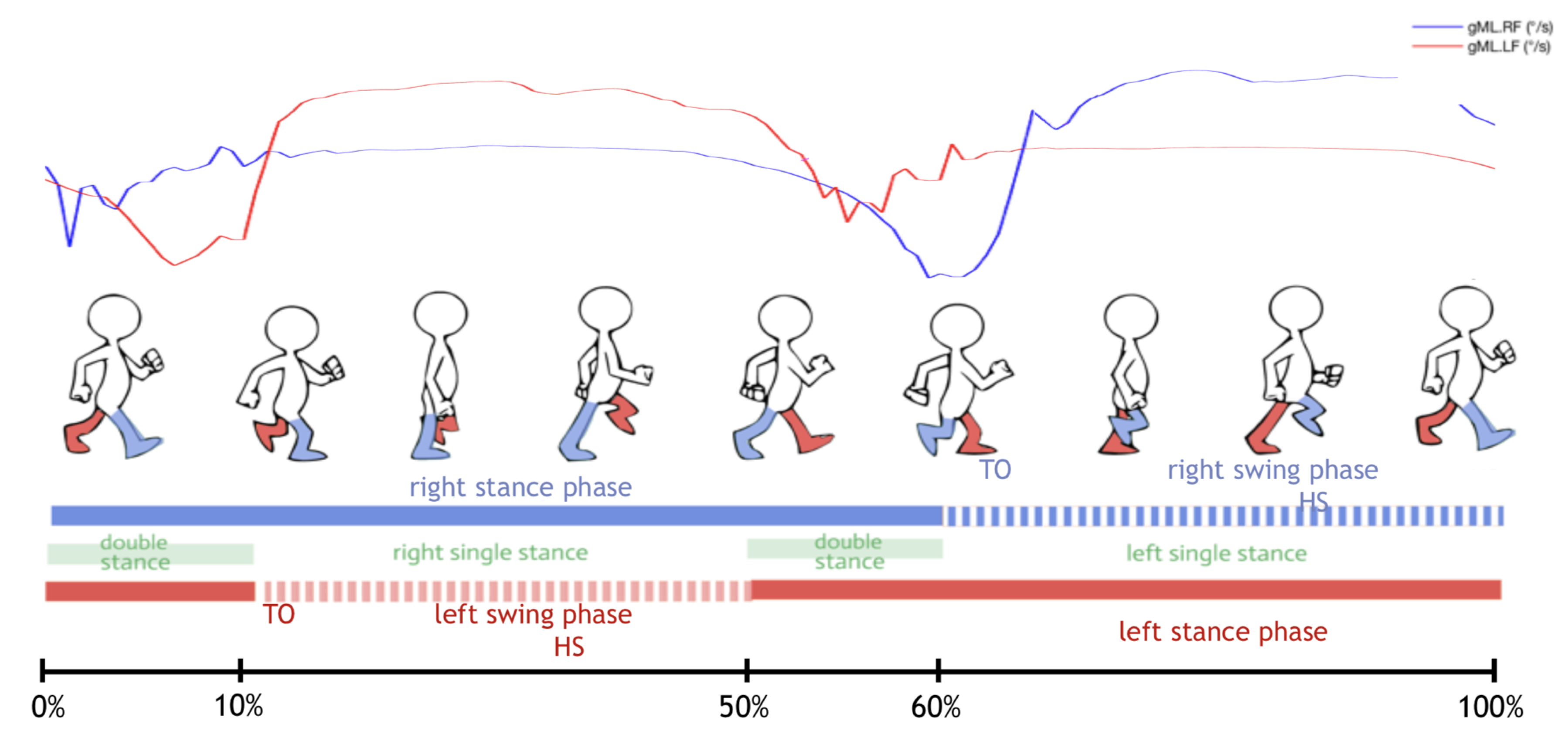
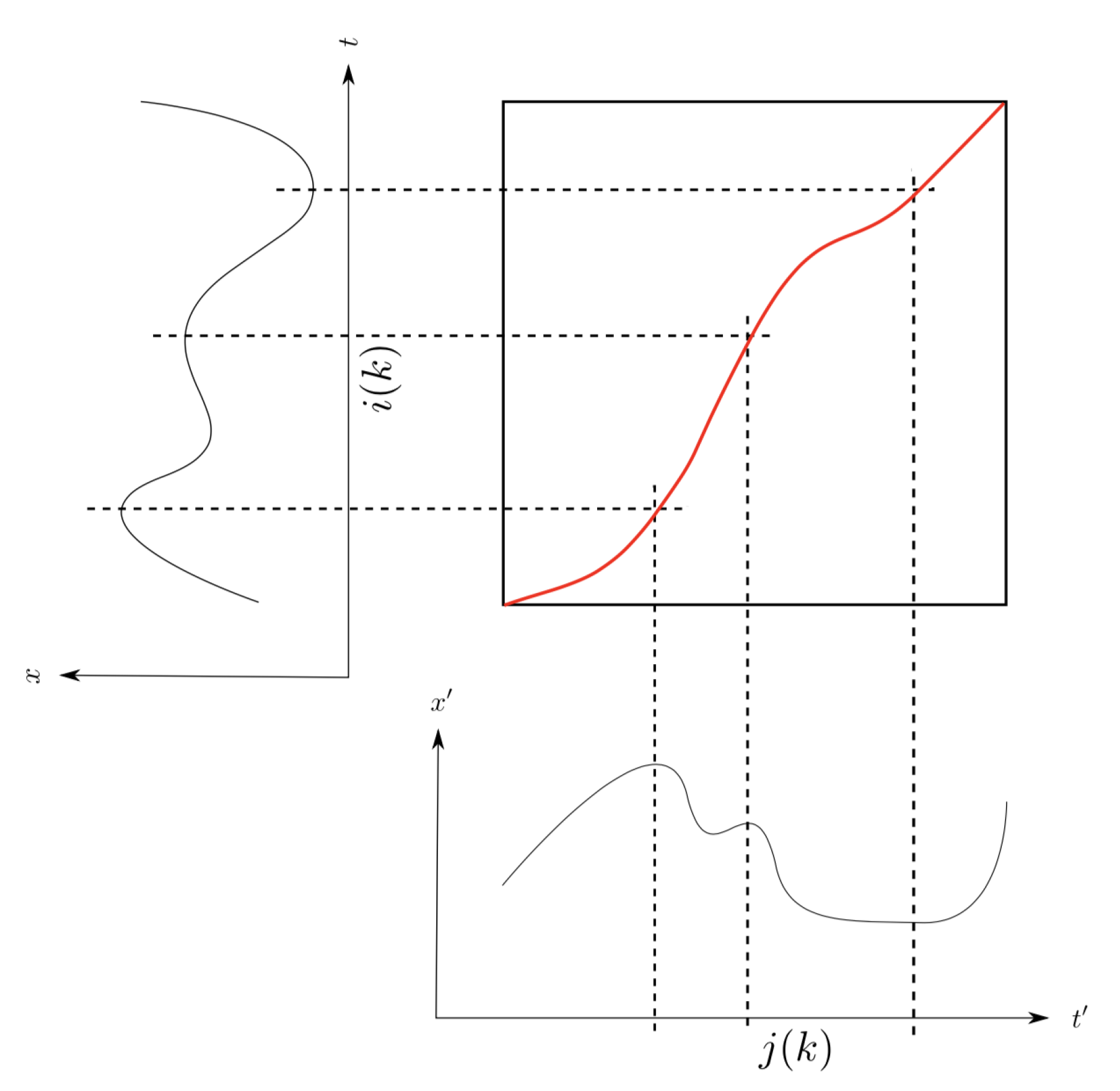
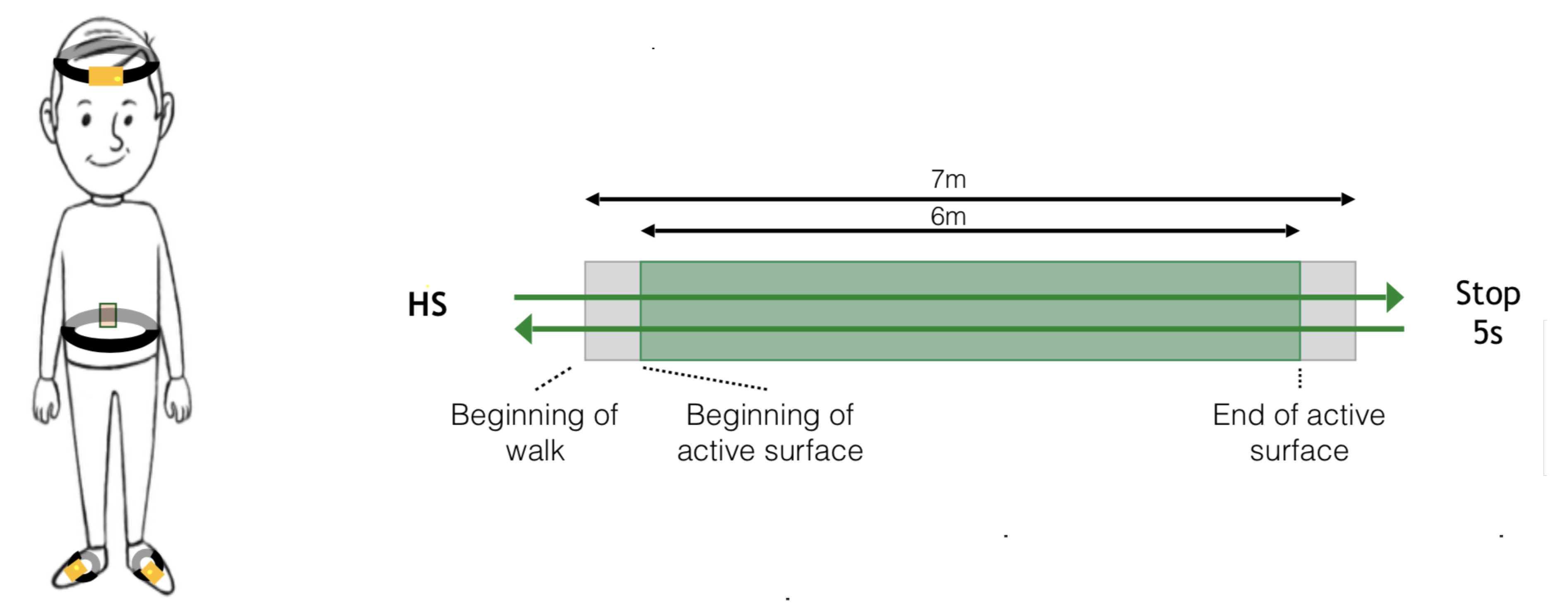
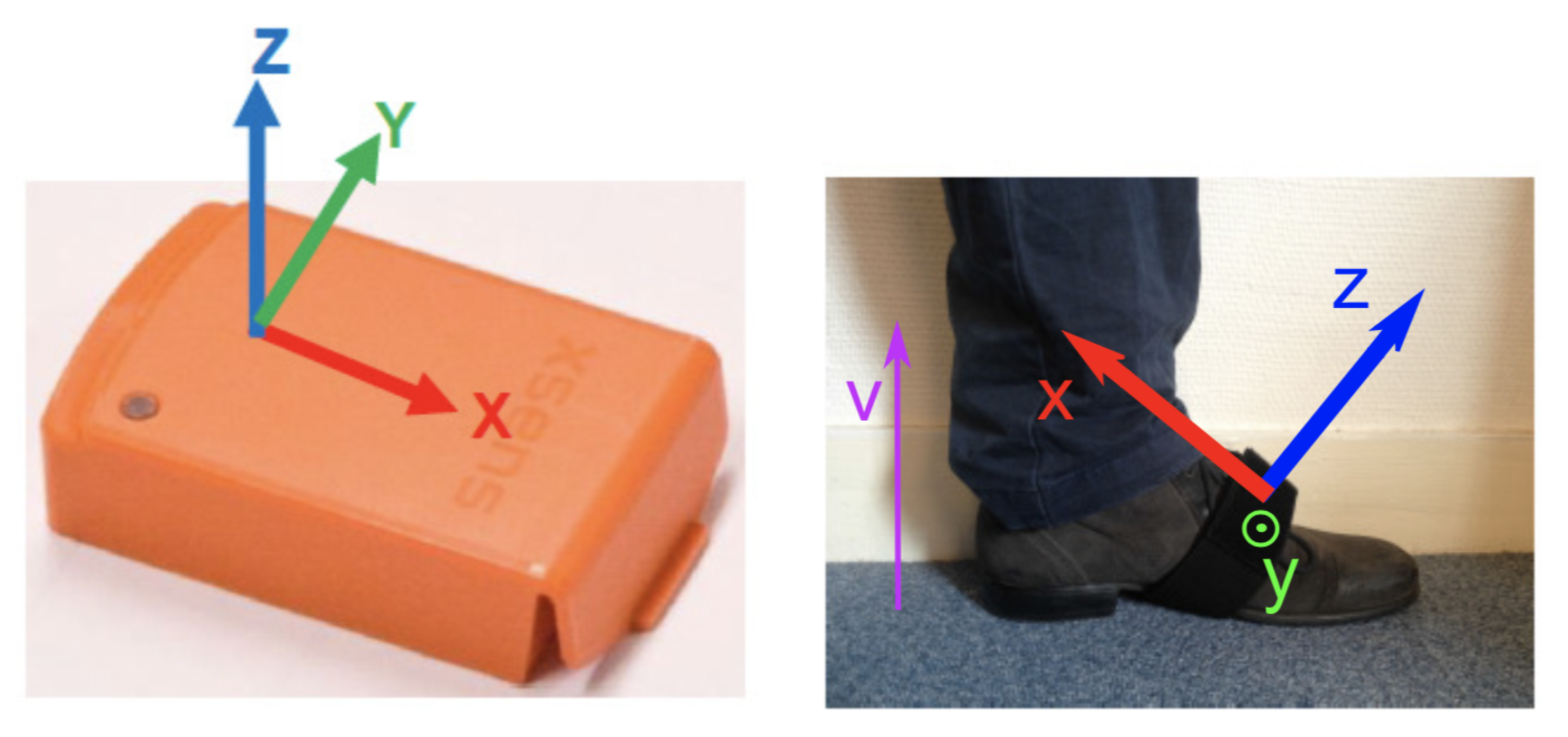


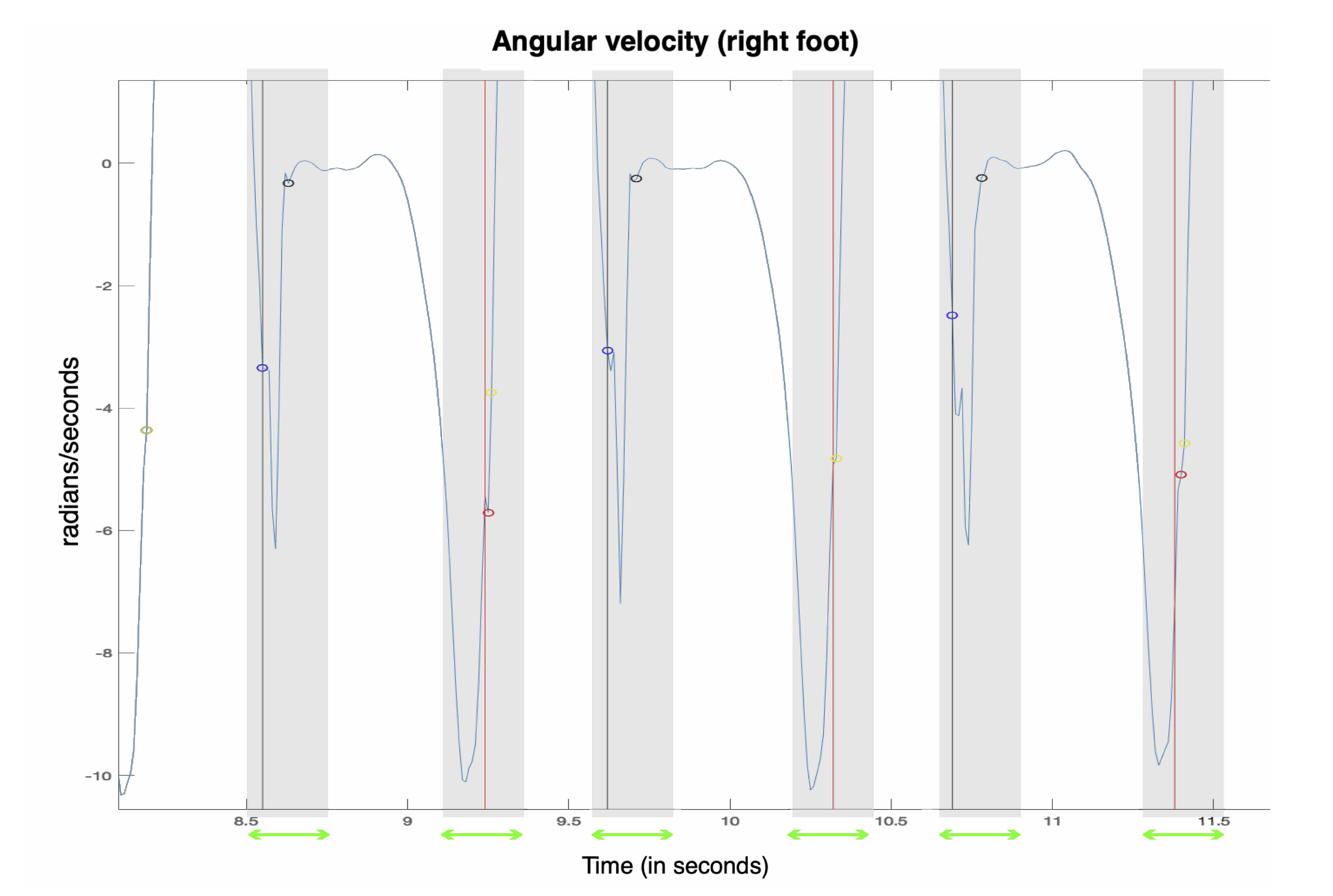
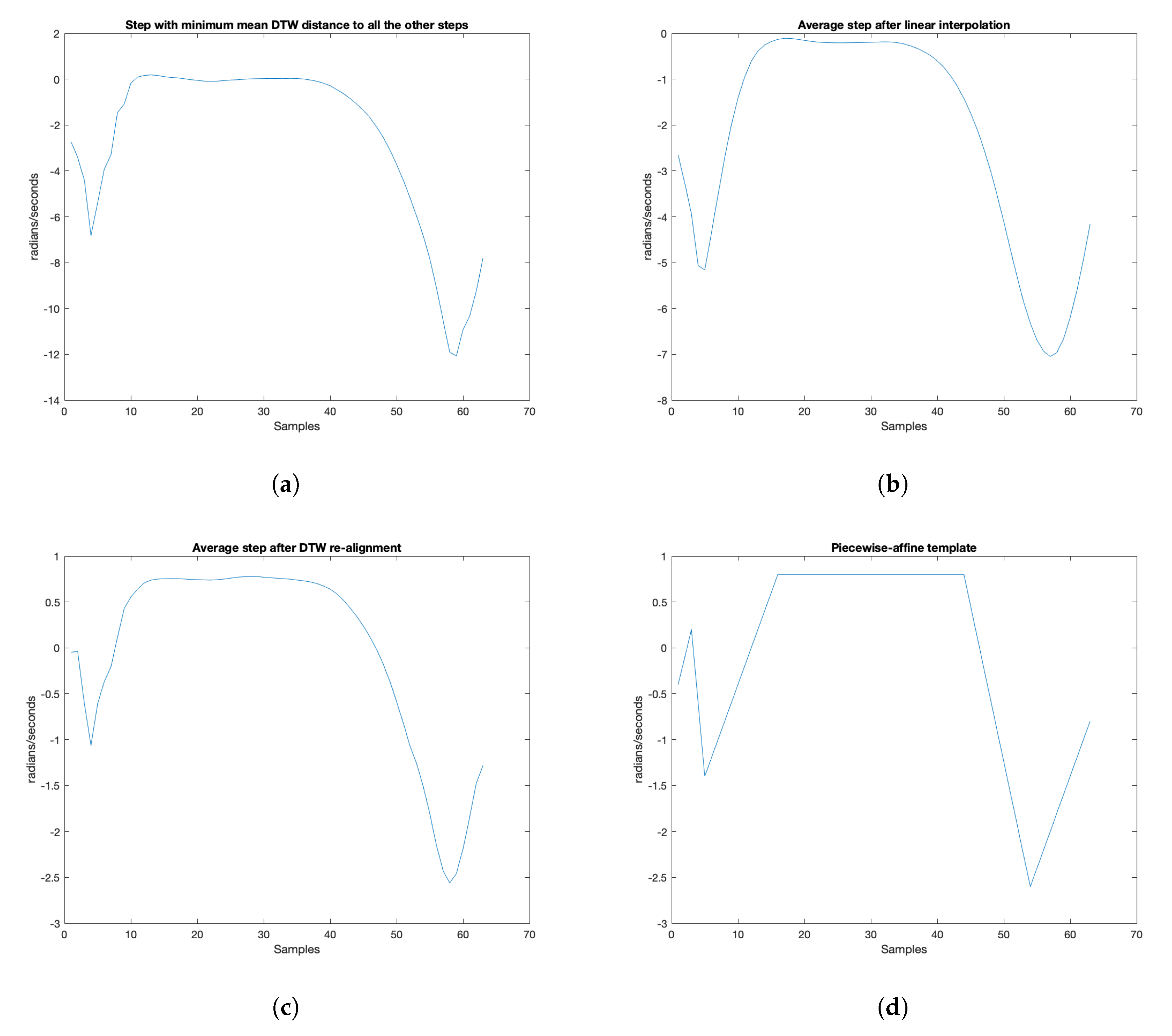
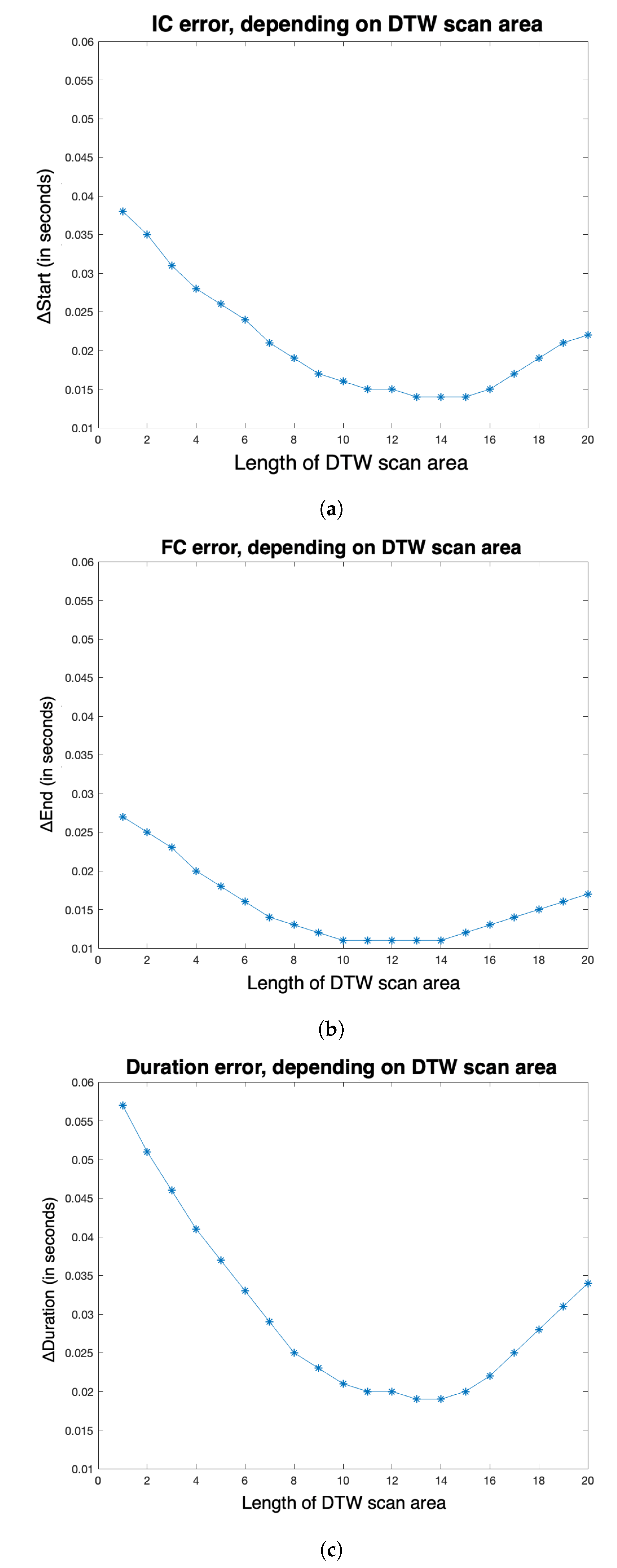
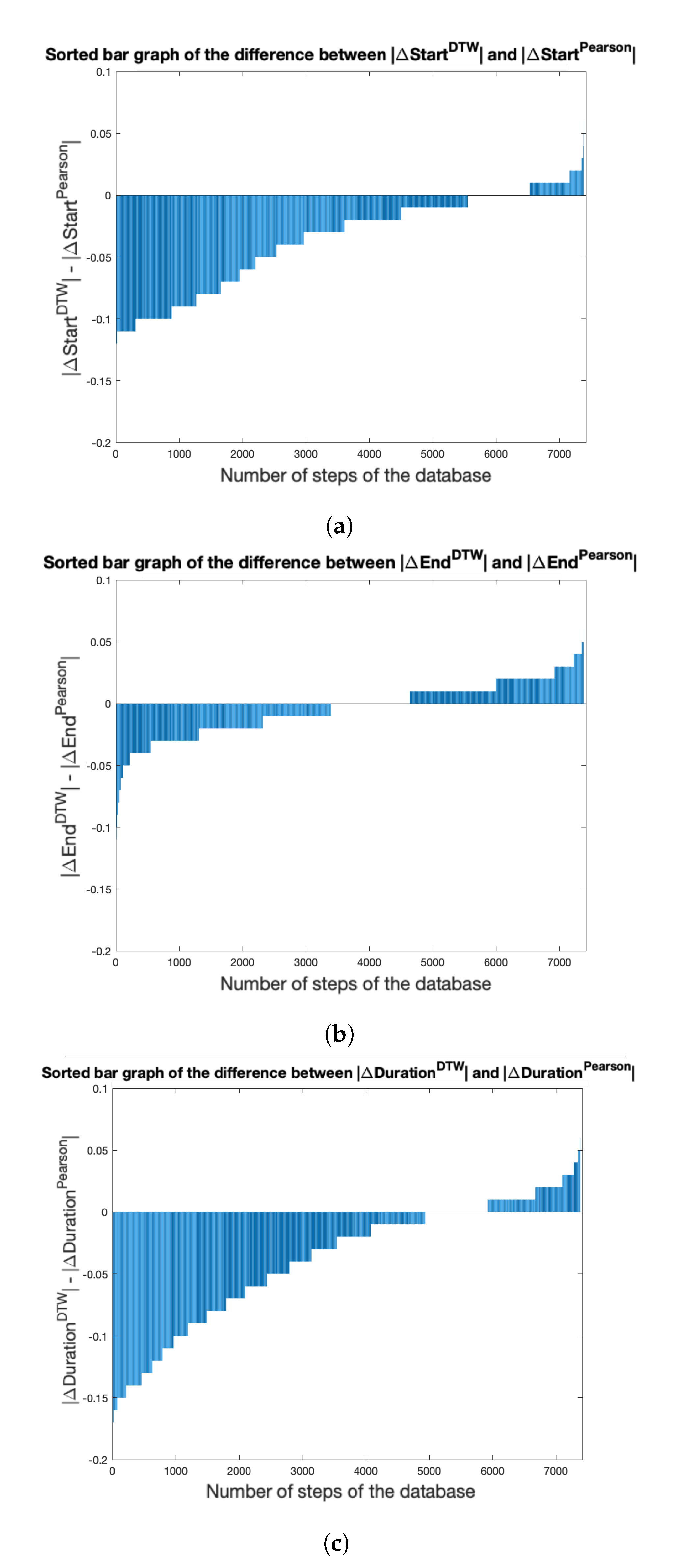
| Subjects (n = 13) | |
|---|---|
| Sex (M/F) | 6/8 |
| Age (years) | 26.6 (2.0) |
| Height (m) | 1.69 (0.09) |
| Weight( kg) | 63.3 (14.8) |
| Publication | Start | End |
|---|---|---|
| Perez et al. (2019) [73] | 12 to 72 | 12 to 112 |
| Caramia et al. (2019) [74] | 22 | 24 |
| Kidzinski et al. (2019) [35] | 10 | 13 |
| Gadaleta et al. (2019) [34] | ≈ 40 | ≈ 40 |
| Mei et al. (2019) [75] | ≈ 20 | ≈ 20 |
| Precision | Recall | Start | End | Duration | Computation Time | ||
|---|---|---|---|---|---|---|---|
| S1-1 | no DTW | 0.99 (0.012) | 0.96 (0.086) | 49 (63) | 15 (21) | 60 (74) | 8 min |
| DTW | 0.99 (0.012) | 0.96 (0.086) | 25 (30) | 13 (17) | 27 (33) | 33 min | |
| S1-10 | no DTW | 0.99 (0.008) | 1.0 (0.0) | 16 (23) | 13 (18) | 23 (32) | 37 min |
| DTW | 0.99 (0.008) | 1.0 (0.0) | 20 (25) | 12 (17) | 24 (29) | 4 h 20 min | |
| S2 | DTW | 1.0 | 1.0 | 21 (23) | 11 (14) | 26 (25) | 33 min |
| S3 | DTW | 0.96 | 0.97 | 17 (25) | 15 (14) | 18 (26) | 33 min |
| S4 | DTW | 1.0 | 1.0 | 21 (23) | 10 (13) | 22 (25) | 33 min |
| S5 | DTW | 0.99 | 0.99 | 15 (18) | 16 (13) | 19 (15) | 33 min |
© 2020 by the authors. Licensee MDPI, Basel, Switzerland. This article is an open access article distributed under the terms and conditions of the Creative Commons Attribution (CC BY) license (http://creativecommons.org/licenses/by/4.0/).
Share and Cite
Dot, T.; Quijoux, F.; Oudre, L.; Vienne-Jumeau, A.; Moreau, A.; Vidal, P.-P.; Ricard, D. Non-Linear Template-Based Approach for the Study of Locomotion. Sensors 2020, 20, 1939. https://doi.org/10.3390/s20071939
Dot T, Quijoux F, Oudre L, Vienne-Jumeau A, Moreau A, Vidal P-P, Ricard D. Non-Linear Template-Based Approach for the Study of Locomotion. Sensors. 2020; 20(7):1939. https://doi.org/10.3390/s20071939
Chicago/Turabian StyleDot, Tristan, Flavien Quijoux, Laurent Oudre, Aliénor Vienne-Jumeau, Albane Moreau, Pierre-Paul Vidal, and Damien Ricard. 2020. "Non-Linear Template-Based Approach for the Study of Locomotion" Sensors 20, no. 7: 1939. https://doi.org/10.3390/s20071939
APA StyleDot, T., Quijoux, F., Oudre, L., Vienne-Jumeau, A., Moreau, A., Vidal, P.-P., & Ricard, D. (2020). Non-Linear Template-Based Approach for the Study of Locomotion. Sensors, 20(7), 1939. https://doi.org/10.3390/s20071939





